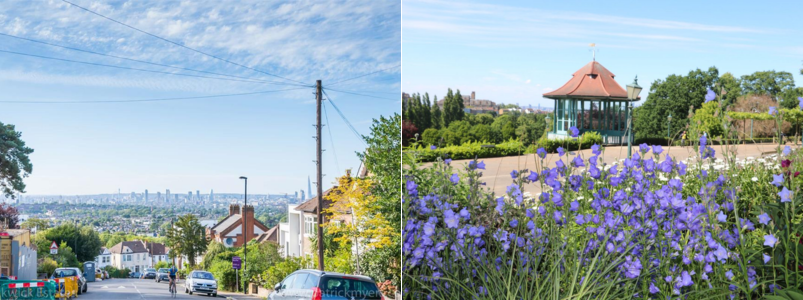Description

History
Forest Hill remained rural until the 19th century, being part of the Great North Wood—an oak forest that covered much of modern South London. The railway came in 1839, and the relocation of the Crystal Palace from Hyde Park to Sydenham in 1854 coincided with the construction of grand houses in the area. In 1884 London's oldest surviving public swimming pool was built in Forest Hill and in 1901, the Horniman Museum was opened. Ted Christmas, a renowned local builder from the 1900s to the 1930s, left a legacy with the famous 'Christmas houses' in the area. The Art Deco influence is evident in the 1929 Capitol cinema and the mansion blocks, such as Taymount Grange, constructed in the 1930s.
Leisure & Amenities
Things to do in Forest Hill:
- Horniman Museum & Gardens
- Canonbie Road - for the view of London
- Forest Hill Library
- Devonshire Rd Nature Reserve
- Sydeham Gardens
Best Places to eat and drink in Forest Hill:
- The Signal Pub
- The Hill
- Aga’s Little Deli
- The Dartmouth Arms
- Lazy Chef Forest Hill
- St Davids Coffee House
- BOnA Sourdough Pizza
Transport (Zone 3)
- Forest Hill station - London Overground and Southern trains
- South Circular Road
- Numerous bus routes to central London and elsewhere in south London
Buying/Letting Properties in Forest Hill
Forest Hill, situated in South London, emerges as an attractive and cost-effective locale for both residential and commercial ventures. Offering a compelling advantage of affordability combined with accessibility. Victorian to 1930s housing, coupled with leafy streets and captivating views, appeals to families and young professionals alike. Improved transport, including the London Overground, enhances connectivity, making Forest Hill an attractive investment. For those considering property ventures, we can provide you with professional guidance, leveraging our insight into the local property market. Get in touch today.

